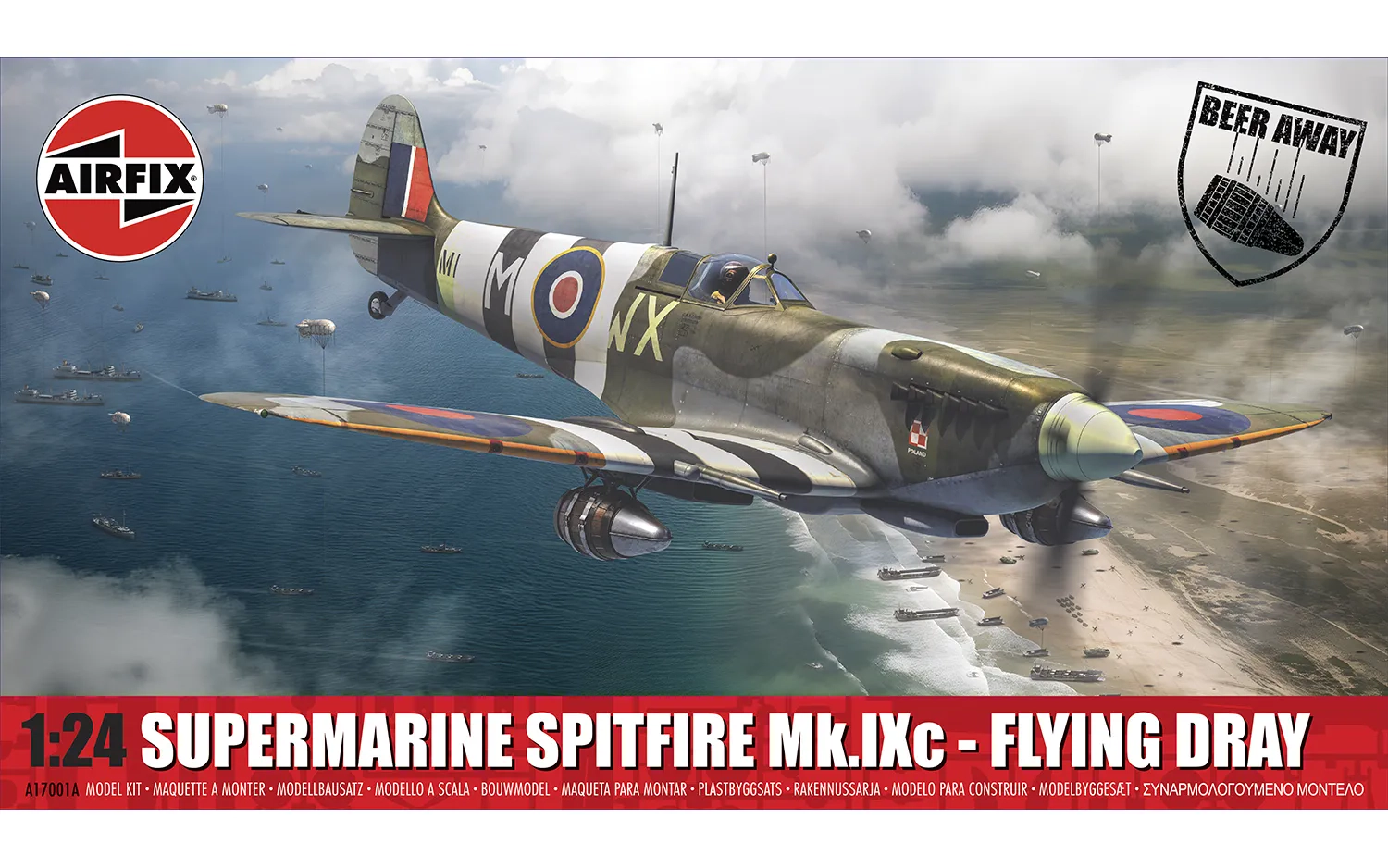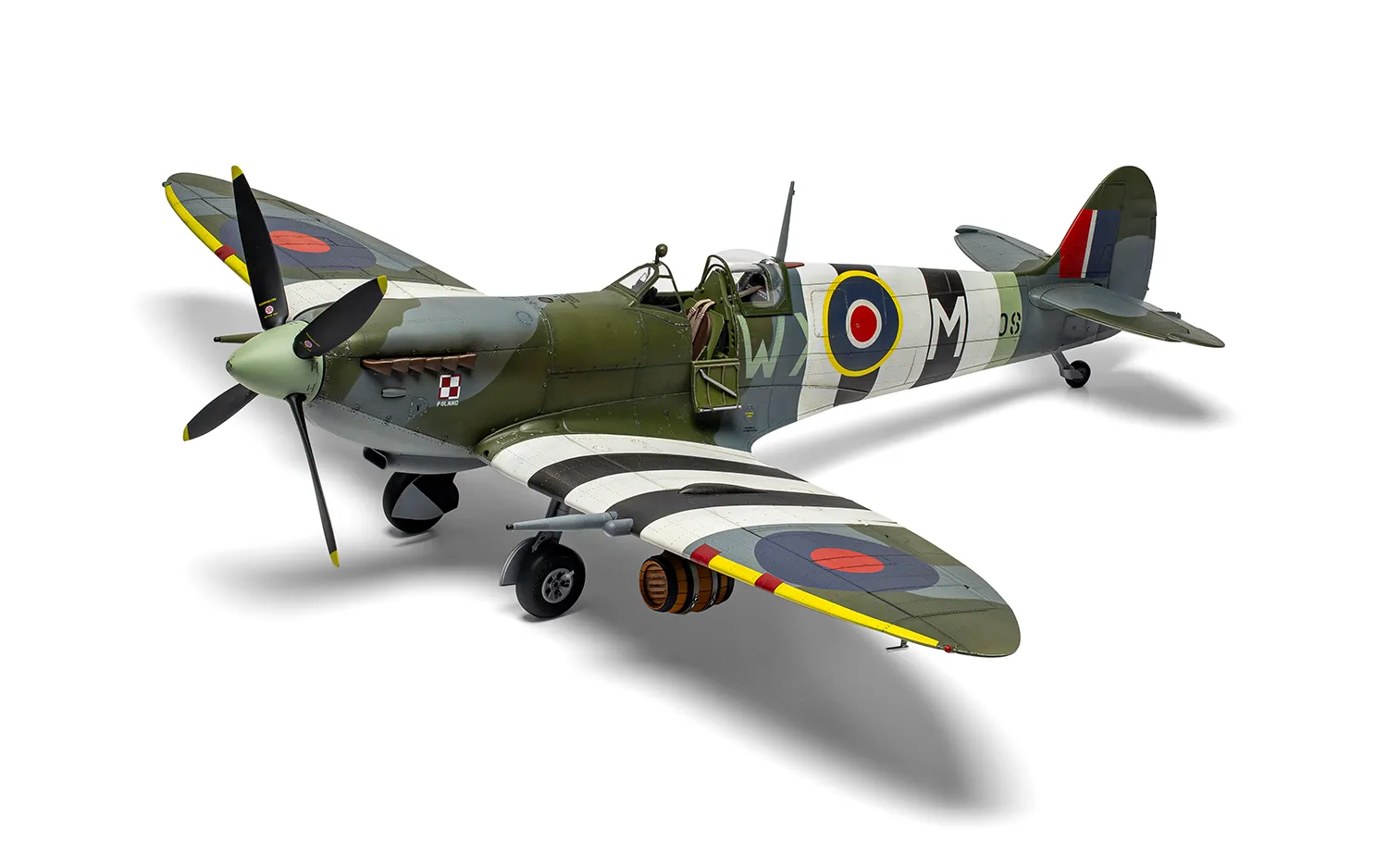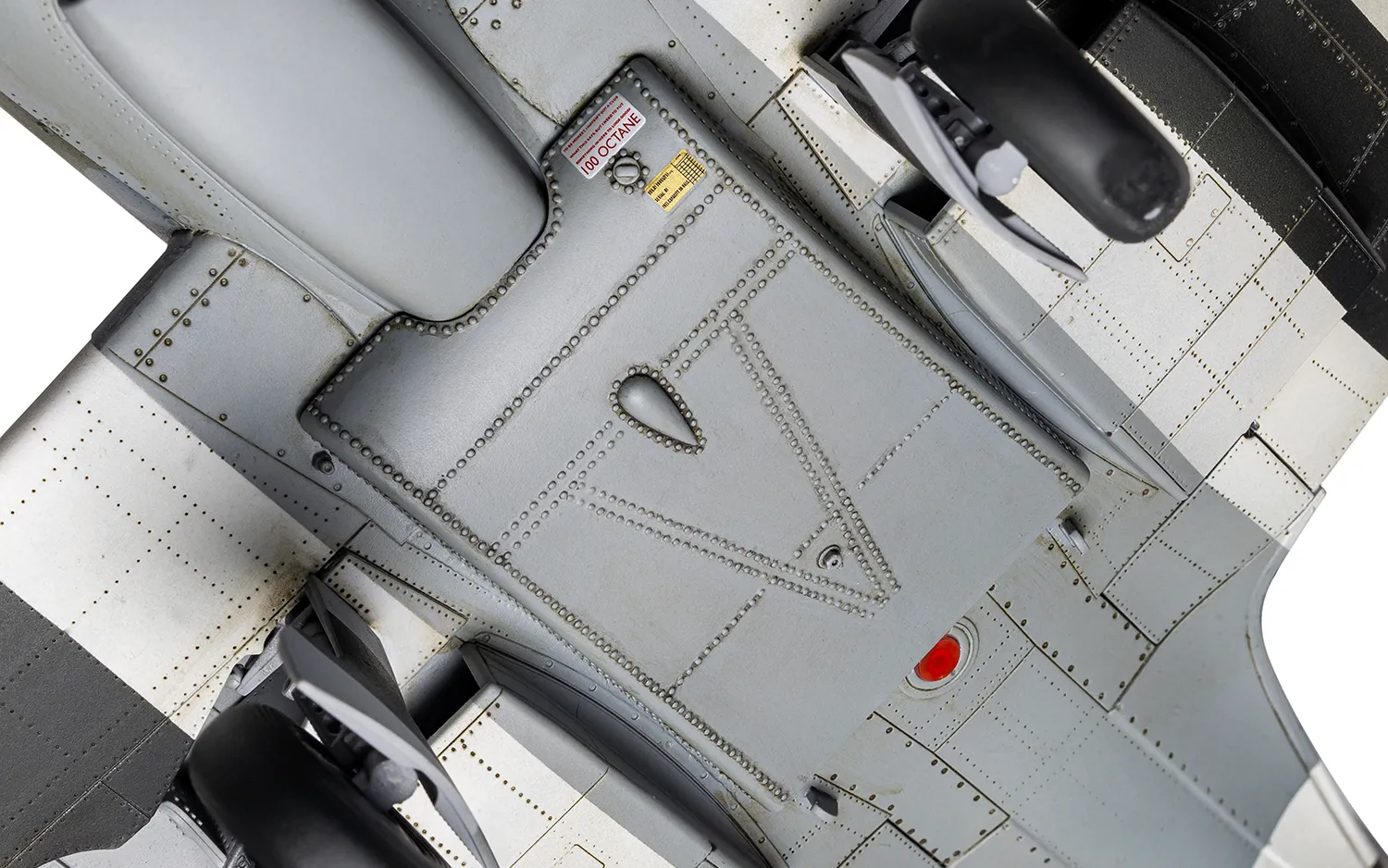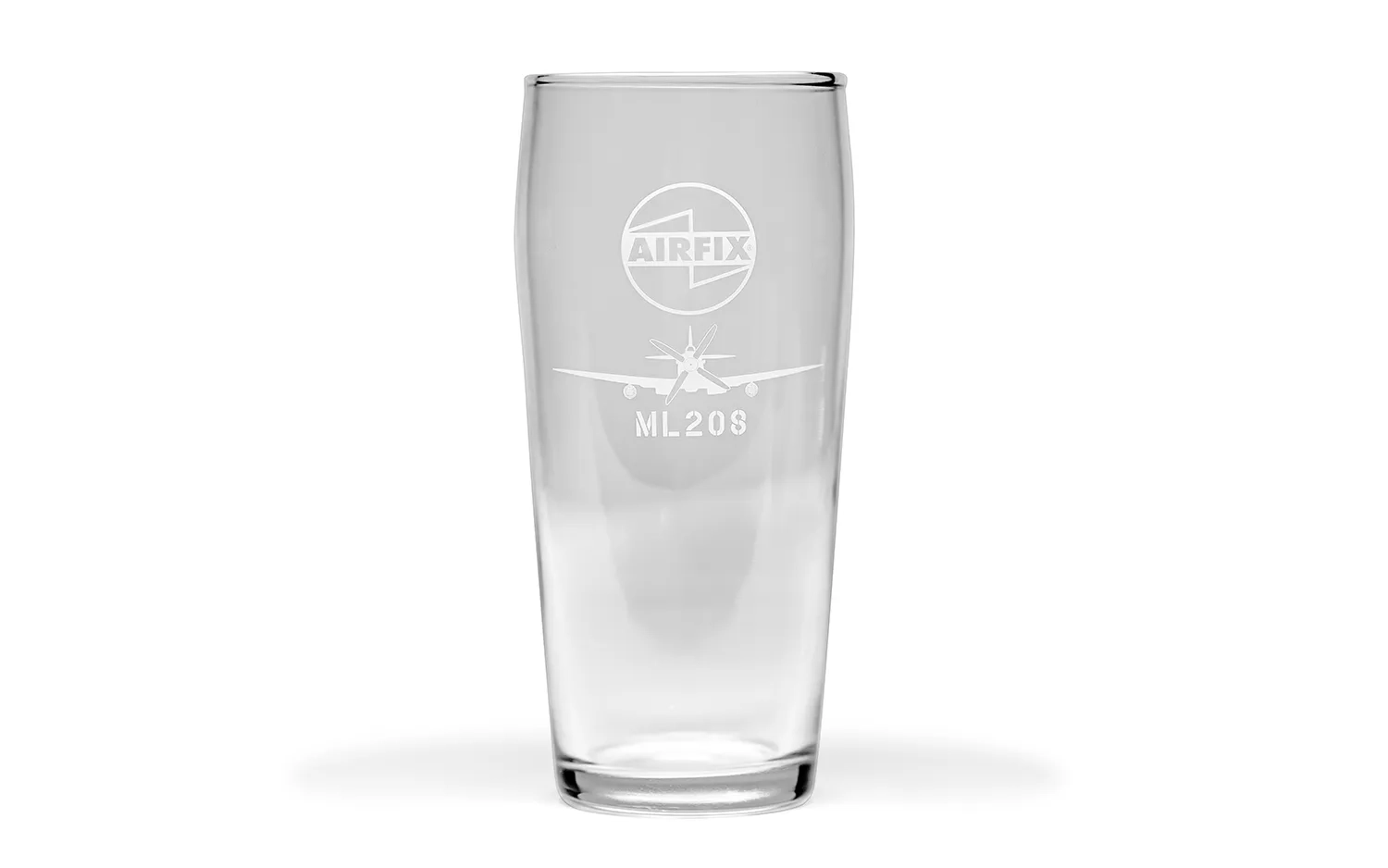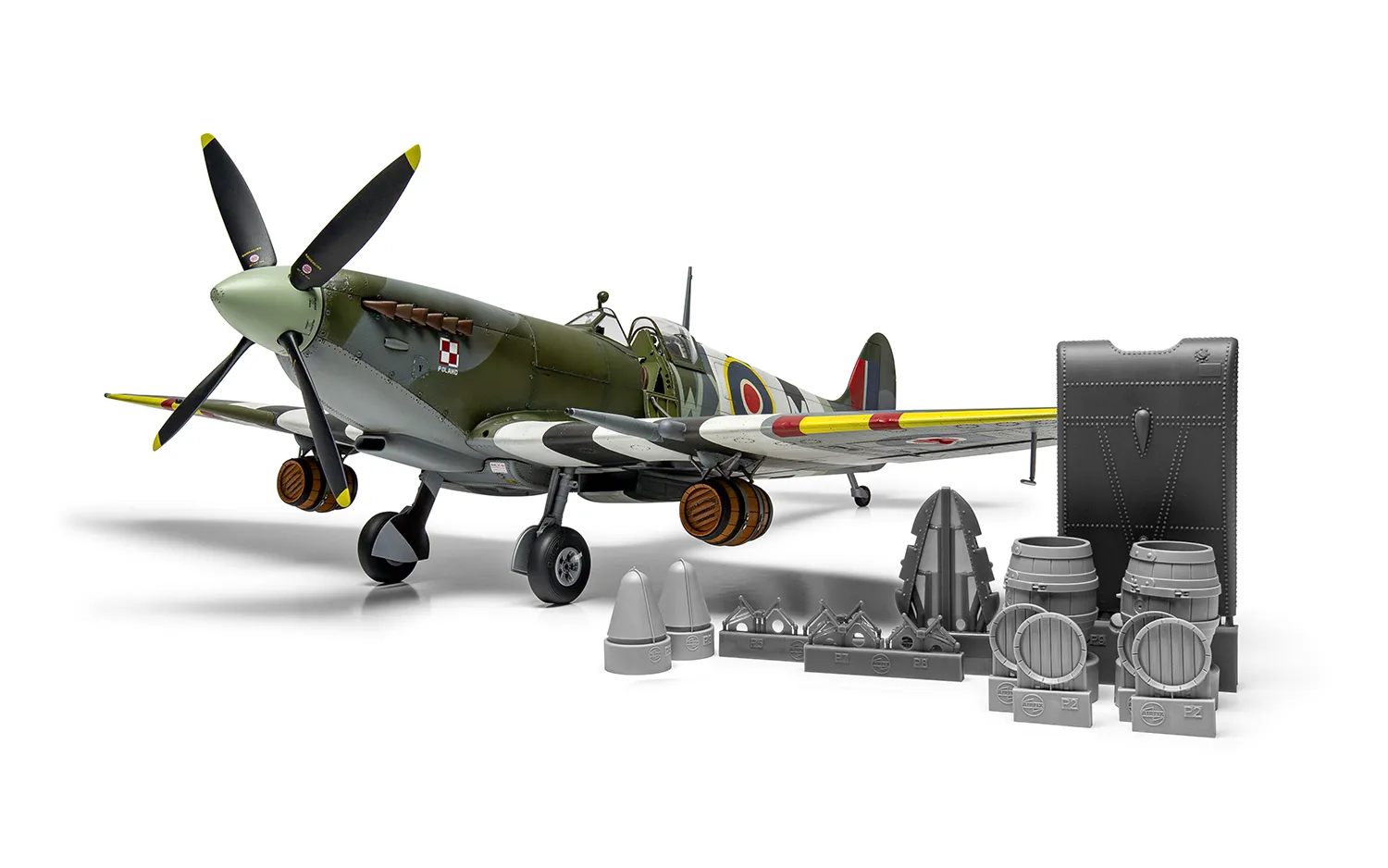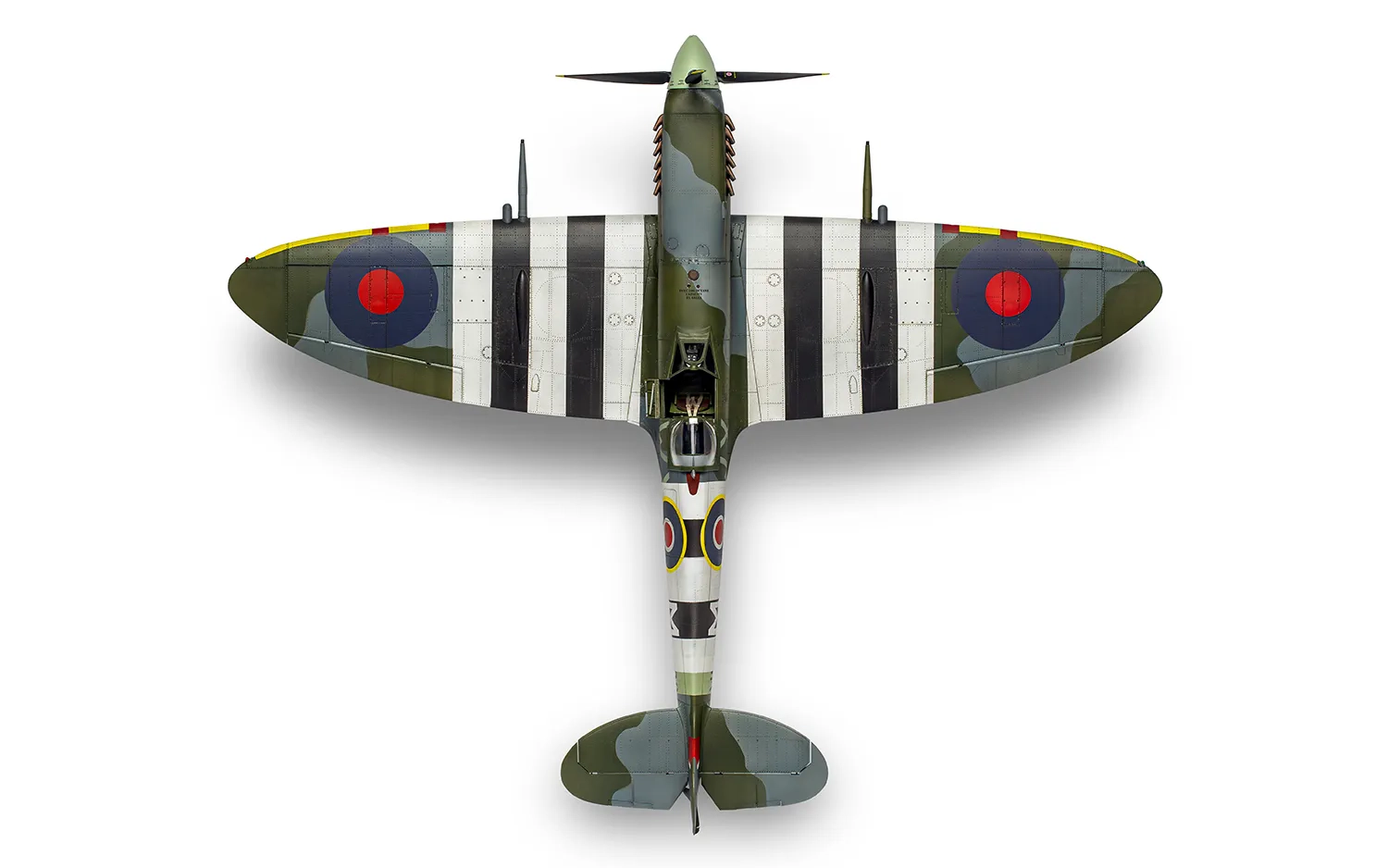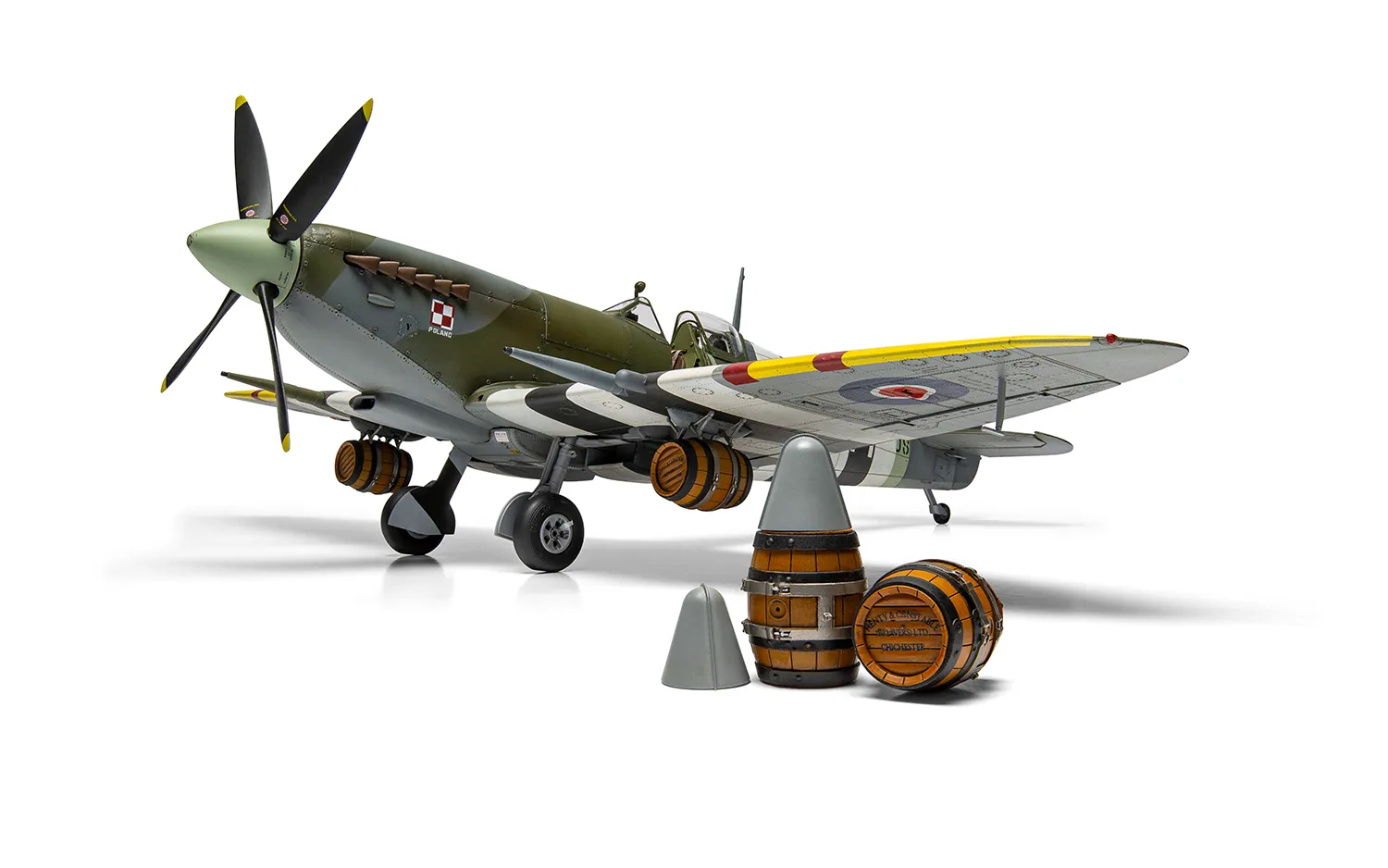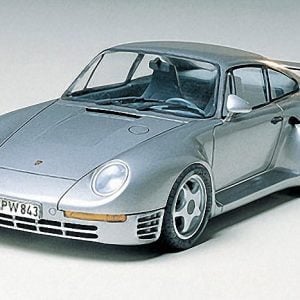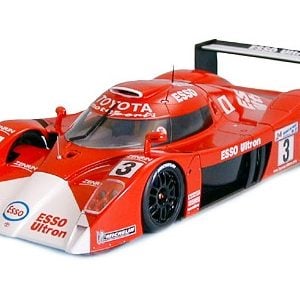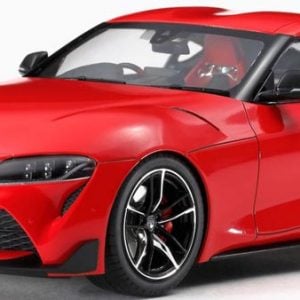Airfix Supermarine Spitfire Mk.1Xc Flying Dray 1/24 Scale A17001A
$229.99
Flying Drays 2025 Edition – with an Airfix glass
En rupture d'inventaire
Email when stock available
La description
Flying Drays 2025 Edition – with an Airfix glass
New A17001A Edition
This Supermarine Spitfire Mk.IXc kit in 1:24 scale includes all the parts you need to replicate the beer-carrying Spitfires, the ‘Flying Drays’. Build your own morale-boosting Second World War aircraft and create a lasting tribute to the heroes of war.
We’ve also added in some additional resin parts, essential for enhancing the story of your model. These include two beer barrels with lids, two nose cones, two bomb racks and a slipper tank.
History
Over the years, various photographs and stories from pilots’ memoirs have emerged about Spitfires that carried beer barrels. Publications mention a special ‘Depth Charge Modification XXX’. After the D-Day landings, squadrons based at the forward airfields in northern France would send a pilot back across the Channel in a Spitfire to collect some beer or ale in barrels strapped under the wings on modified bomb racks.
Obviously, such sorties would have been deemed highly irregular by the RAF’s higher command, so the flights would not have been recorded as such in the pilot’s logbooks. Which leaves little official proof as to the exact details of these ad hoc deliveries.
Recurring details relating to these escapades frequently turn up in various secondary sources. One example is the involvement of The Henty and Constable Brewery in Chichester and the nearby RAF Ford. To raise spirits, the story was also propagandised by the newspapers of the time, accompanied by some clearly staged photographs.
So, it’s difficult to determine the full and accurate story or whether the pilots claiming involvement in such missions were instead guilty of not letting the truth to get in the way of a good story.
In the summer of 1944, after the D-Day landings, British troops pressing into Normandy faced fierce resistance—and a dry pint glass. Supplies were tight, and morale was vital. So, in one of the war’s most unexpected missions, Spitfire pilots took to the skies, not just with ammunition, but with beer.
Ingenious airmen modified drop tanks and strapped barrels beneath their wings, delivering much-needed refreshment to parched troops across the Channel. Some called it “Operation Cheers.” These weren’t official missions. They were flights of morale. Spitfires, symbols of British grit, became airborne drays for a brief, glorious period.
It wasn’t about luxury. It was about home. A cold beer in a hot war zone was more than a drink—it was a reminder of what they were fighting for.
So, raise a glass to the RAF pilots who delivered courage, camaraderie, and casks, one flight at a time.
Because even heroes need a pint!
As part of this special release we’ve partnered with CAMRA.
‘CAMRA campaigns for pubs, pints and people, which includes celebrating our beer heritage and how that fits into the history of Great Britain. The story of the Spitfires and their ‘Flying Dray’ service to the front lines of D-Day is a brilliant example of that.
Airfix’s Flying Dray Spitfire kit sounds like the perfect way for beer lovers to remember this unique piece of history’ – CAMRA
Previous A17001 Edition:
In the world of aviation, is there any aircraft which can even come close to matching the iconic status the Supermarine Spitfire enjoys, a legacy which is as strong today as it was during the wartime years? A modern monoplane fighter aircraft which made its first flight from Eastleigh Aerodrome on 5th March 1936, the Spitfire would earn its legendary reputation during the Battle of Britain, when the pilots of the Royal Air Force stood defiantly against the overwhelming might of the all-conquering Luftwaffe, an aviation beacon of hope for a nation and its people during their darkest hour.
Elegant and graceful to look at, the Spitfire’s appearance masked the fact that this was a deadly fighting aeroplane and one which was adaptable enough to undergo almost constant development throughout the wartime years, allowing later marks of the fighter to post speeds which were almost 100 mph faster than the first machines to enter service. With a service career which extended well into the post war years, the Spitfire outlived all its aviation contemporaries and with over 22,000 Spitfires of all variants (including Seafires) eventually being built, Spitfires are still a regular sight at Airshow events all over the world, as an ever increasing number of restored airworthy aircraft continue to write the enduring Spitfire story. Even though the prototype Spitfire made its first flight over 85 years ago, the aircraft is still widely regarded as Britain’s most famous aircraft type and instantly recognisable to many millions of people the world over.
The Spitfire Mk.IX variant was arguably the most important mark of Spitfire in the entire production run and because of that, it is somewhat surprising to learn that it was actually something of a stop-gap development. The arrival of the Luftwaffe’s new Focke Wulf 190 fighter over the Western Front in August 1941 saw RAF Spitfire Mk.Vs operating over the Channel falling victim to the ‘Butcher Bird’ in ever increasing numbers and something had to be done. A major Spitfire upgrade was in progress, but the Mk.VIII was still some way off, as manufacturing facilities prepared their tooling jigs for the new aircraft, but there was a temporary solution. One of the major features of the new Spitfire was its use of a powerful new version of the Rolls Royce Merlin engine and it was proposed that fitting this new engine to a Spitfire Mk.V airframe would give the fighter a welcome performance boost.
The first 100 Spitfire Mk.IX fighters were actually Mk.Vc airframes adapted to take the new Merlin 61 two stage, two speed supercharged engine, with this combination producing a thoroughbred fighting aeroplane, one which was more than capable of challenging the FW190 and the latest ‘F’ variant of the Messerschmitt Bf 109. In fact, the new Spitfire was considered so successful that this would become the second most heavily produced variant in the entire production run and if including the aircraft powered by the licence built Packard Merlin 266 (Spitfire Mk.XVI) even eclipsed the Mk.V in production numbers. With further powerplant refinement taking place throughout the production life of this variant, the first Mk.IX Spitfires started to join RAF Squadrons from July 1942, with this famous mark of Spitfire going on to see service past D-Day and into the post war era. The last major Merlin engine powered variant of the Spitfire, this ’emergency stop-gap fighter’ actually became something of an aviation classic.
Assemblage et peinture requis. Le kit n'inclut pas la colle de ciment modèle, la peinture et les outils. Supervision d'un adulte si nécessaire.
Contenu sujet à changement.
Produits similaires
-
Tamiya Porsche 959 Model Kit 1/24 Scale 24065
0 out of 5$31.99 Ajouter au panier -
Tamiya Toyota GT-ONE TS020 Kit de modèle à l'échelle 1/24 24222
0 out of 5$43.49 Ajouter au panier -
Airfix Supermarine Spitfire Mk.VIII 1/24 Scale A17002
0 out of 5$183.99 Ajouter au panier -
Tamiya Toyota GR Supra 1/24 Scale 24351
0 out of 5$66.49 Ajouter au panier

